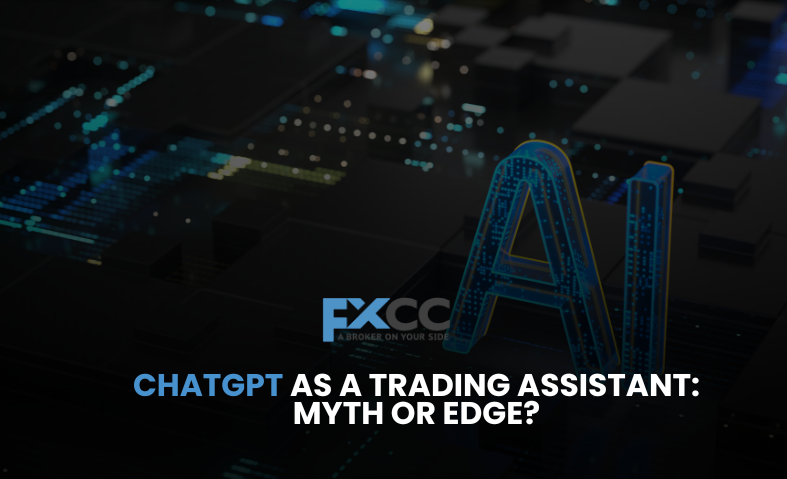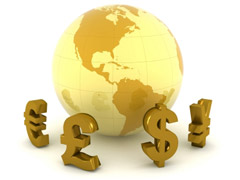The financial world, perennially on the hunt for any advantage, has watched with keen interest as large language models (LLMs) like ChatGPT have burst onto the scene. The allure of an AI capable of processing vast amounts of information, identifying subtle patterns, and even generating human-like text naturally leads to the question: can ChatGPT serve as a genuine trading assistant, offering an “edge” in the markets, or is this merely a captivating “myth”? This article delves into the practicalities, limitations, and potential of leveraging ChatGPT in the complex domain of financial trading.

Understanding ChatGPT’s Core Capabilities in a Trading Context
At its heart, ChatGPT is a sophisticated language model. Its strengths lie in natural language processing, text generation, summarization, and identifying relationships within textual data. For traders, this translates to potential applications in sifting through news articles, earnings call transcripts, analyst reports, and even social media sentiment. It can quickly digest and synthesize information that would take a human hours, if not days, to process. Furthermore, its ability to identify sentiment in textual data – discerning positive, negative, or neutral tones – could theoretically provide early signals on market shifts or individual stock movements.
The Limitations: Where the Myth Begins to Unravel
While impressive, ChatGPT’s capabilities have significant limitations when directly applied to real-time trading. Firstly, its knowledge base is typically cut off at a certain point in time, meaning it lacks up-to-the-minute market data, breaking news, or real-time price movements. It cannot execute trades, manage risk, or react instantaneously to volatile market conditions. Secondly, ChatGPT does not “understand” financial concepts in the same way a human or a specialized algorithmic trading system does. It operates on patterns in text, not on a deep causal understanding of economic principles, geopolitical events, or company fundamentals. It cannot perform complex quantitative analysis, backtest strategies with historical price data, or identify intricate arbitrage opportunities. Relying solely on its textual analysis without integrating it with robust financial data and analytical tools would be akin to navigating a complex ship with only a weather forecast.
Potential Applications: The Edge in Specific Niches
Despite its limitations as a direct trading system, ChatGPT can undeniably offer an “edge” when utilized strategically within specific trading workflows. Its strength in information processing makes it invaluable for qualitative analysis. Imagine using ChatGPT to summarize hundreds of analyst reports on a particular sector, highlighting key themes and dissenting opinions. Or feeding it earnings call transcripts to quickly identify management’s tone, future guidance, and critical questions from analysts. For discretionary traders, this can significantly enhance their research capabilities, allowing them to make more informed decisions faster. Furthermore, ChatGPT could assist in generating initial trade ideas based on news sentiment, though these ideas would still require thorough quantitative validation. It can also be a powerful tool for learning and education, helping traders understand complex financial jargon or economic concepts by breaking them down into simpler terms.
Beyond the Hype: Practical Integration Strategies
The true value of ChatGPT as a trading assistant lies in its integration, not its standalone deployment. Traders can leverage it as a sophisticated research assistant, a sentiment analysis tool for news and social media, or even a programming assistant to help write scripts for data analysis. For instance, a trader might use ChatGPT to identify potential catalysts from news, then use a separate, specialized financial data platform to backtest the impact of similar past catalysts on asset prices. The synergy between qualitative insights from ChatGPT and quantitative analysis from dedicated trading tools is where the real “edge” can be found. It’s about augmenting human intelligence and existing trading infrastructure, rather than replacing them.

The Human Element: Still Indispensable
Ultimately, the human element remains indispensable in trading. Risk management, psychological discipline, adaptability to unforeseen events, and the ability to interpret nuanced market signals are all areas where human intuition and experience currently far outstrip AI capabilities. ChatGPT can provide information, but the decision to act, the size of the position, and the management of that position are still firmly within the human trader’s domain. The “edge” that ChatGPT offers is in enhancing the human trader’s analytical capabilities, freeing up time, and potentially revealing overlooked qualitative insights.
Bottom Line:
ChatGPT is not a magical trading bot that guarantees profits. It is a powerful analytical tool that, when skillfully integrated into a comprehensive trading strategy, can provide a significant informational and analytical edge, primarily in qualitative research and sentiment analysis. It amplifies human intelligence rather than replacing it.


